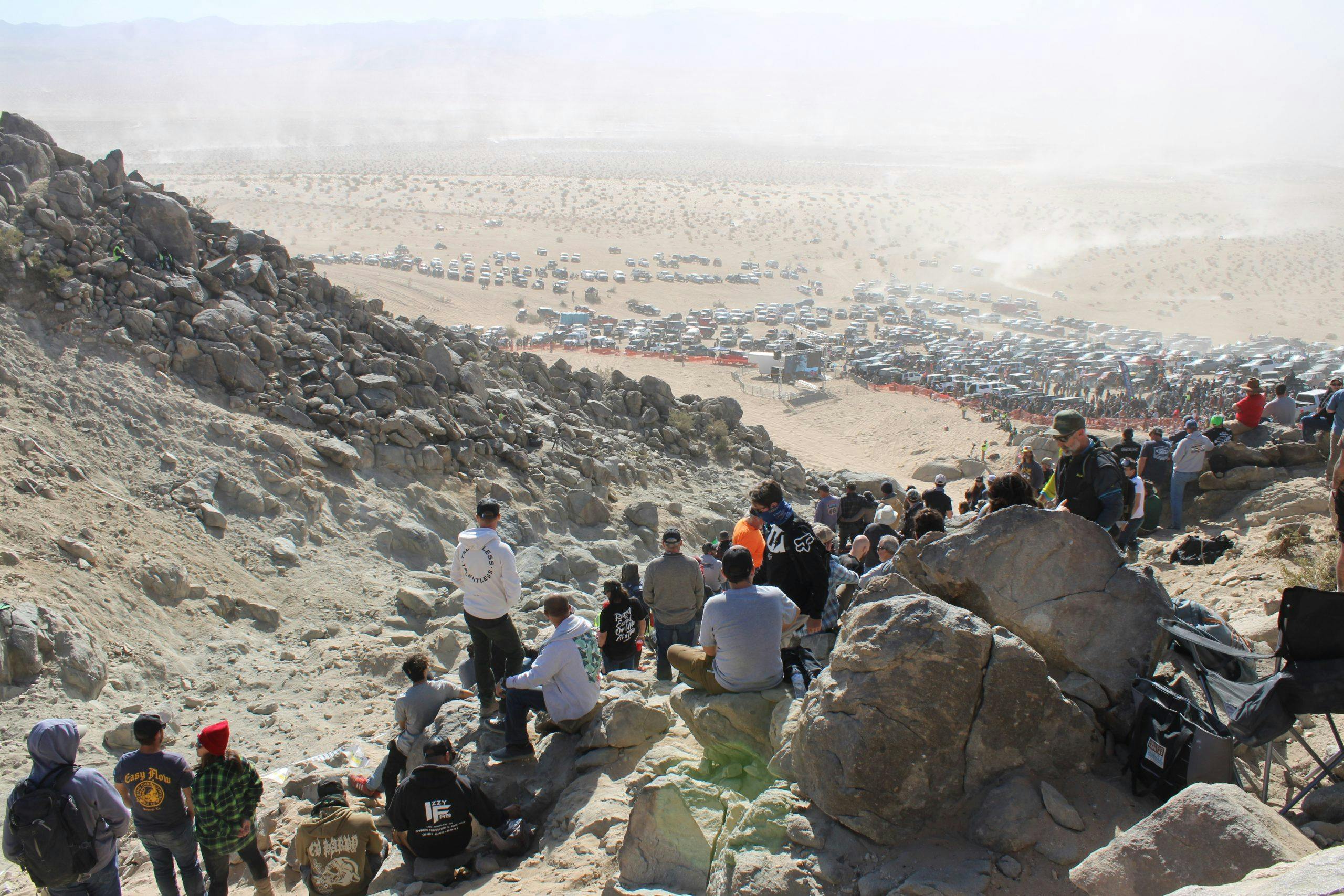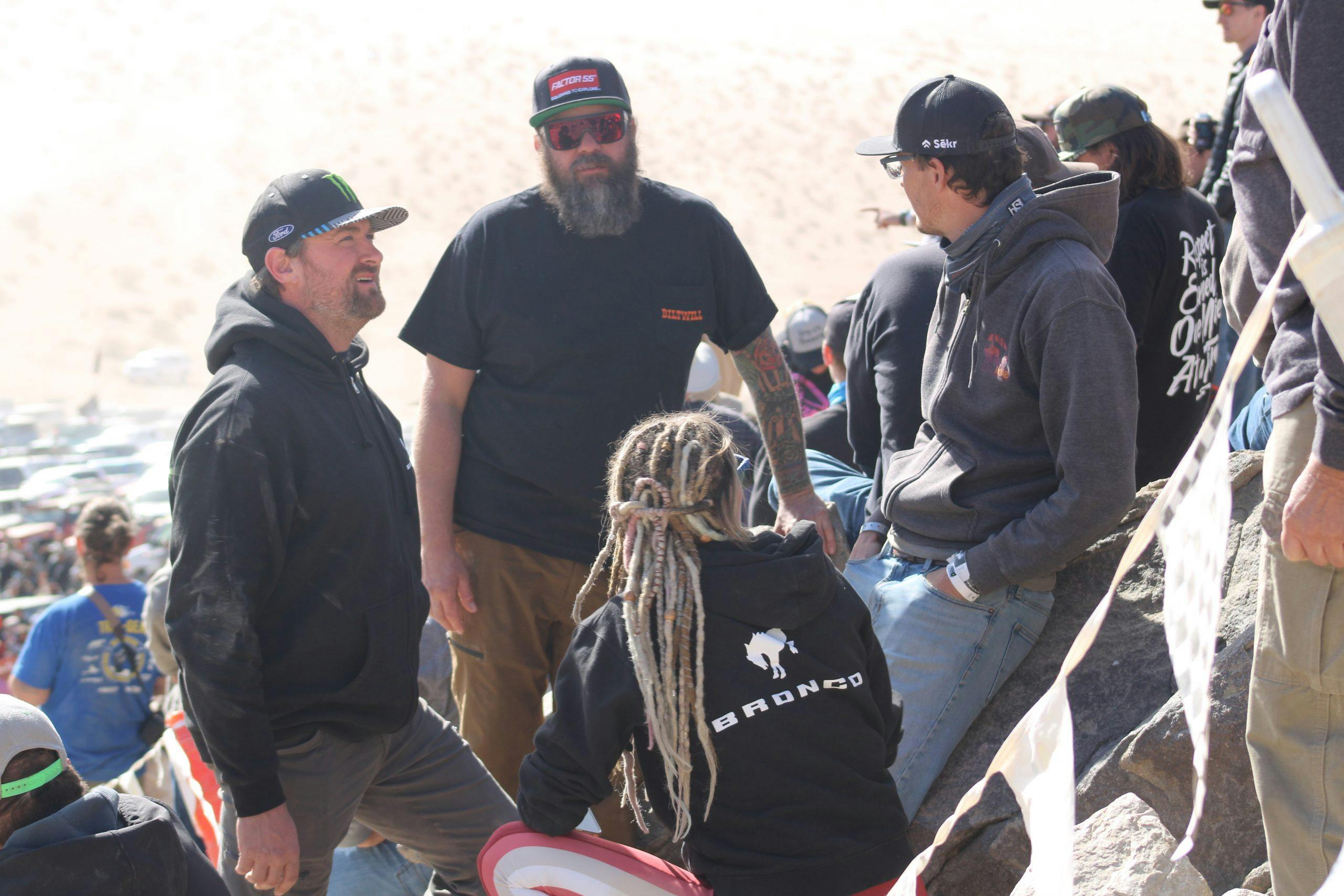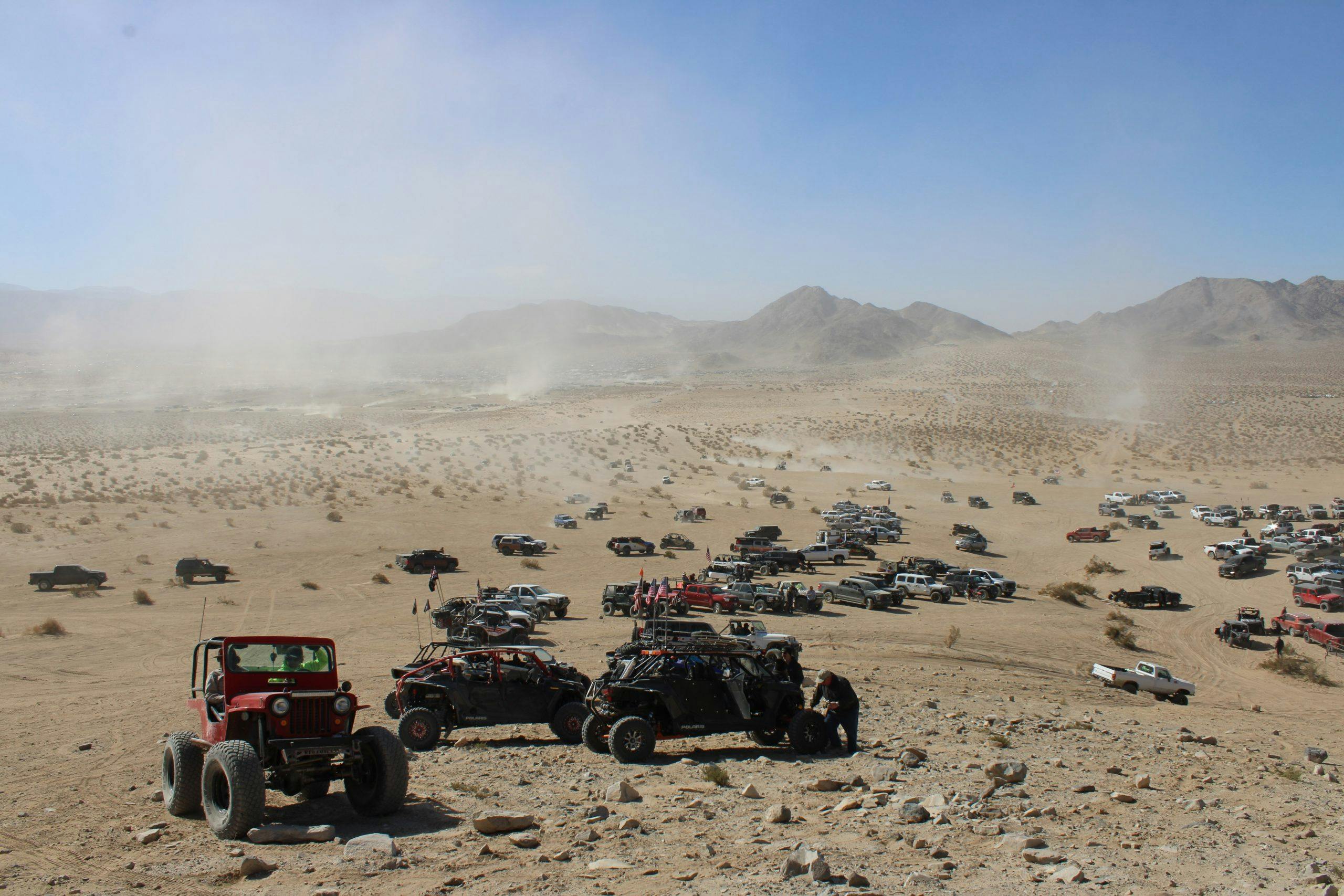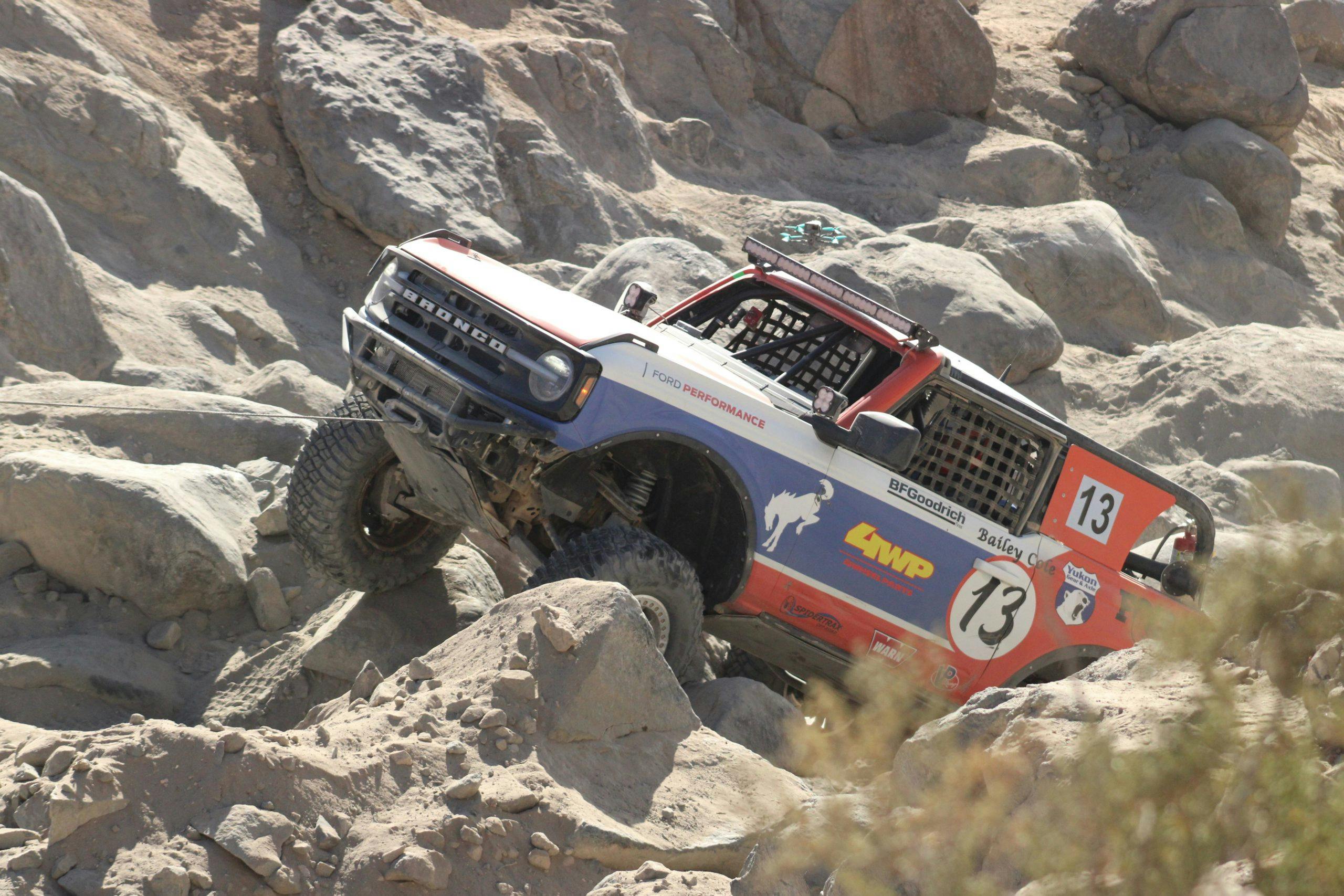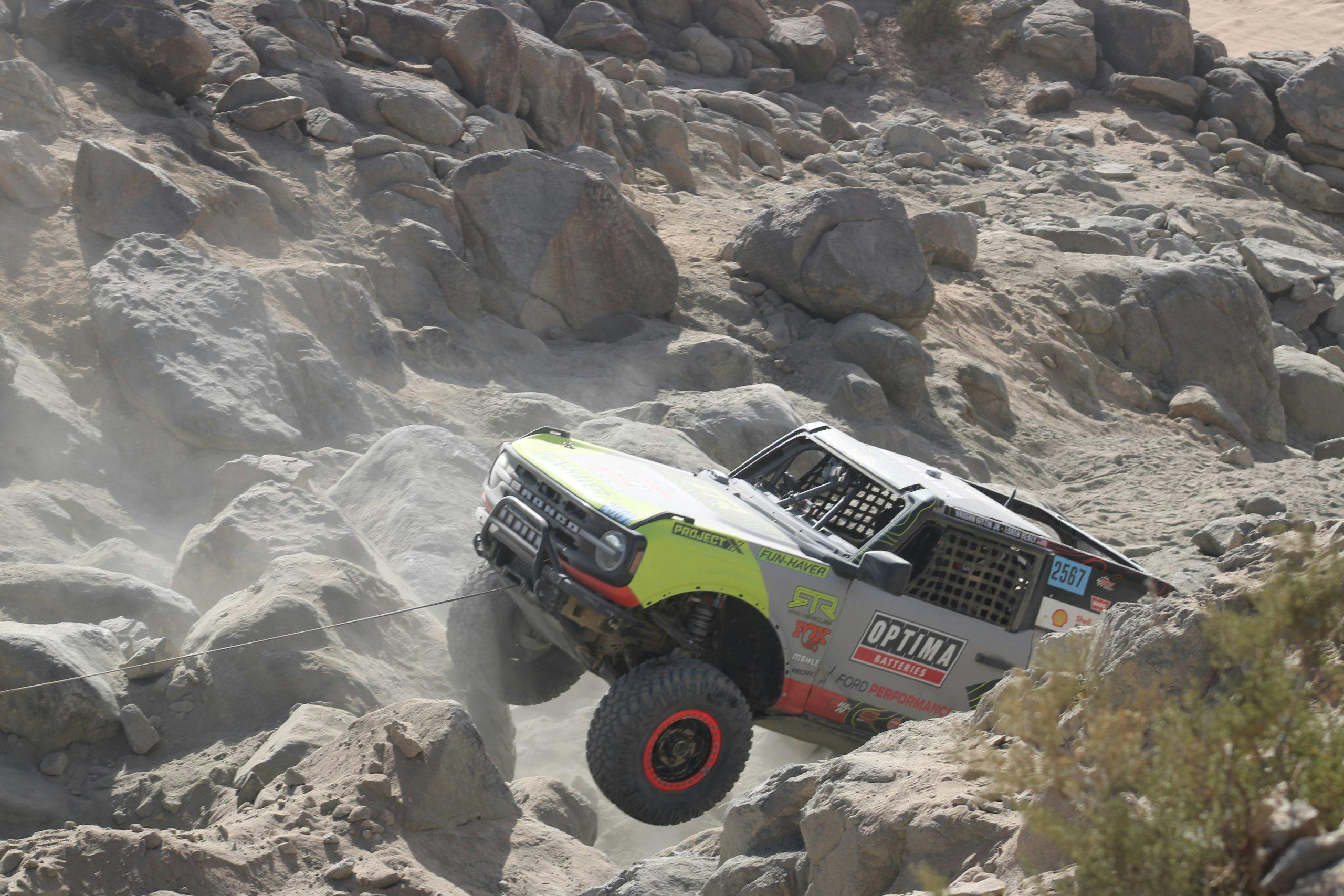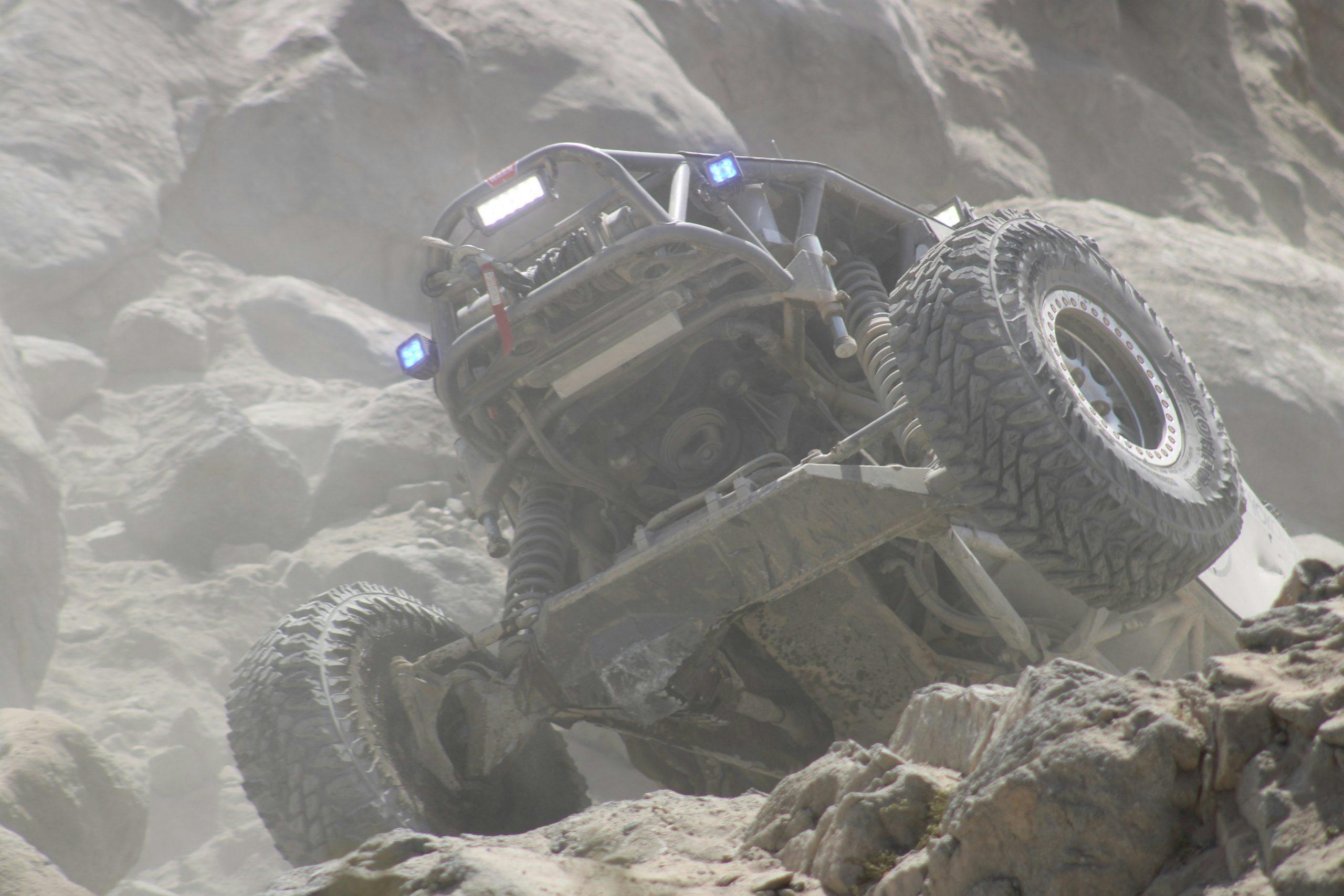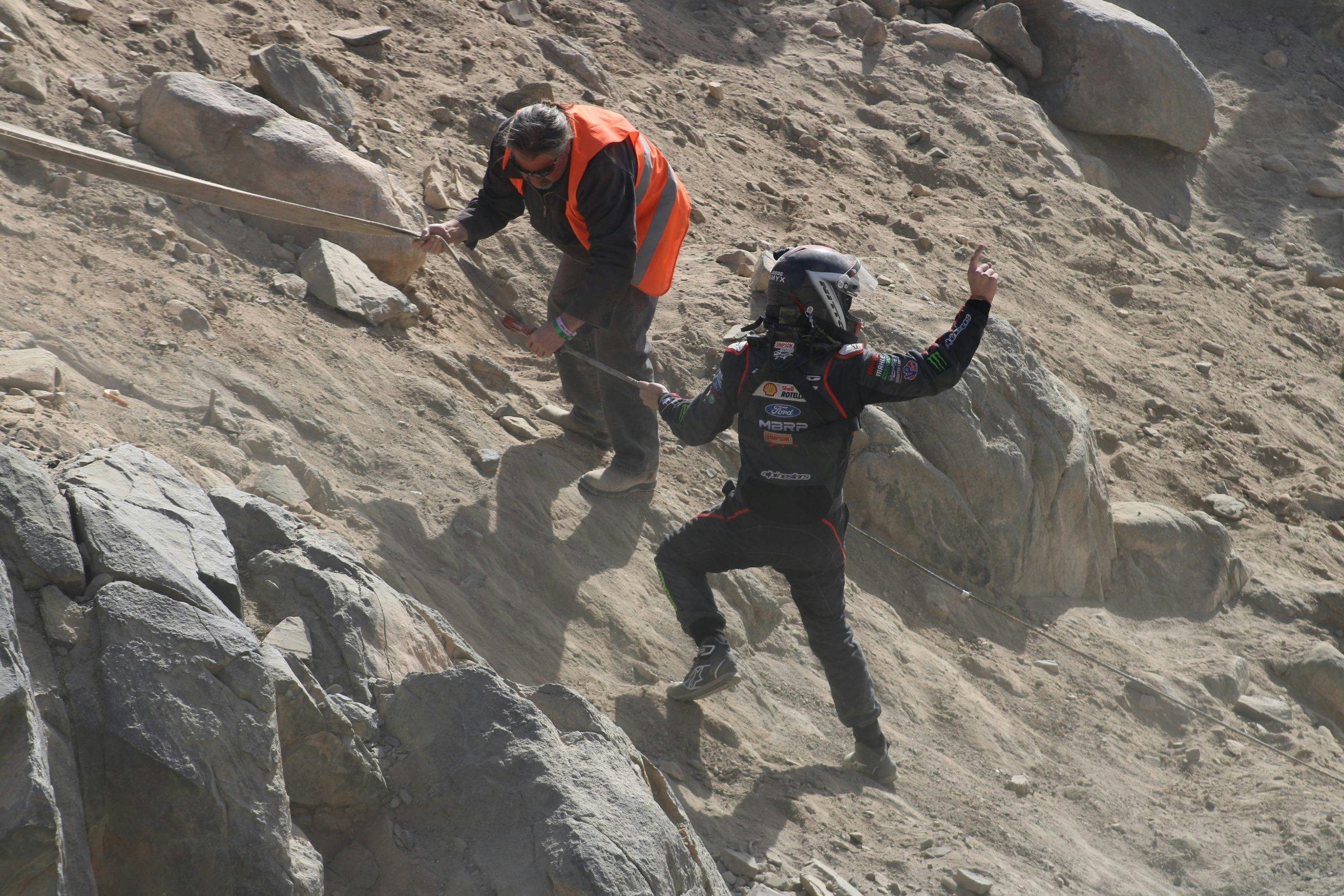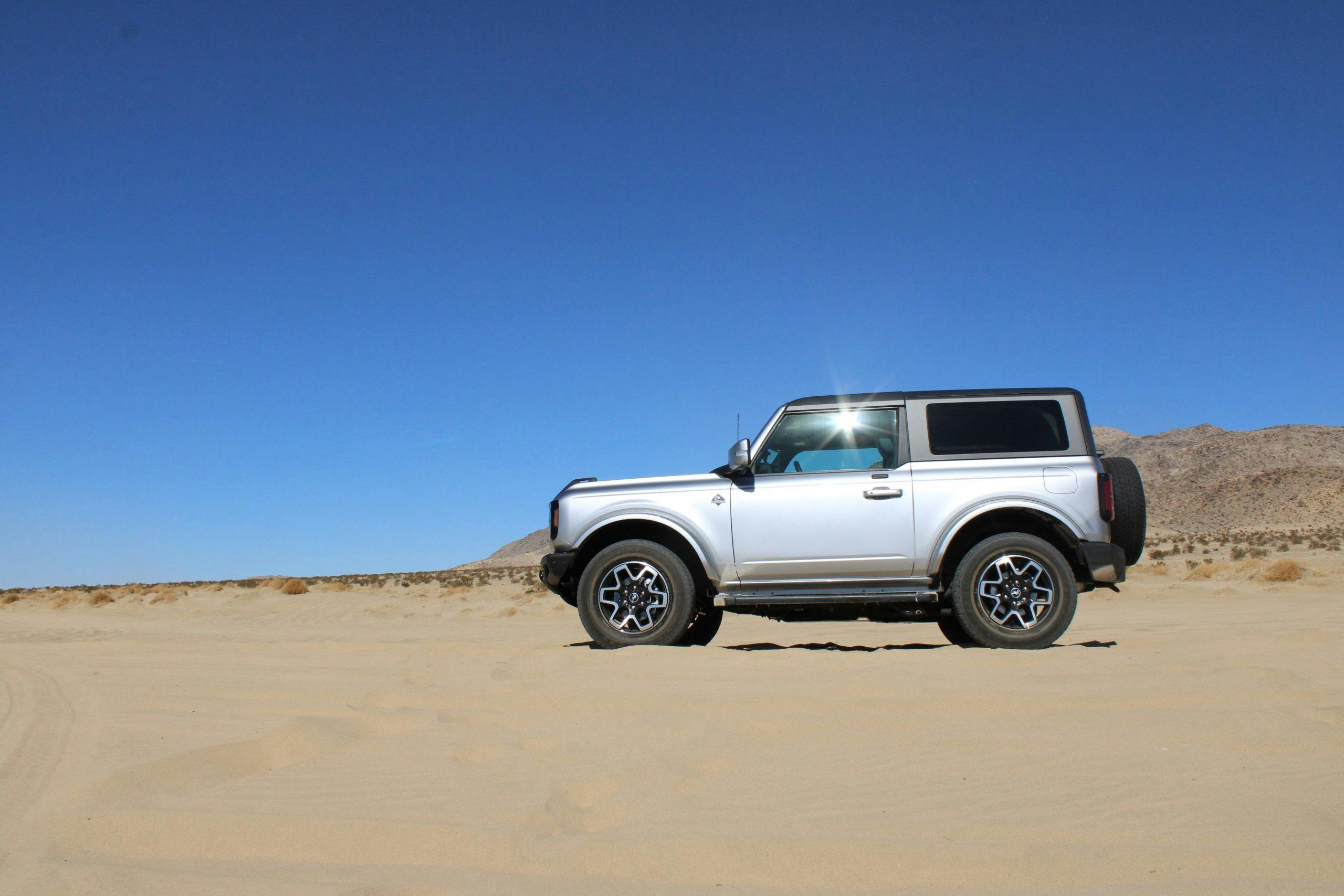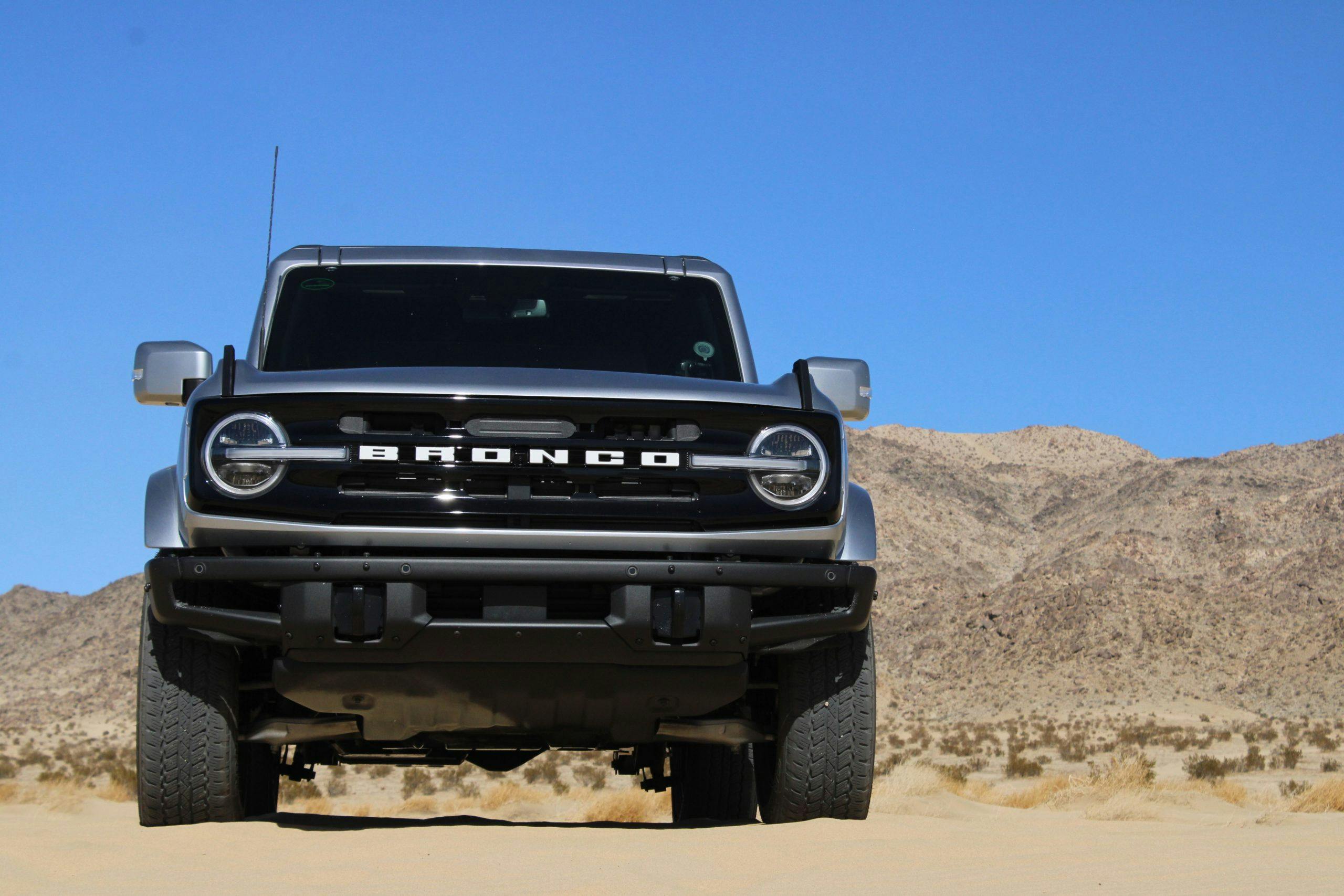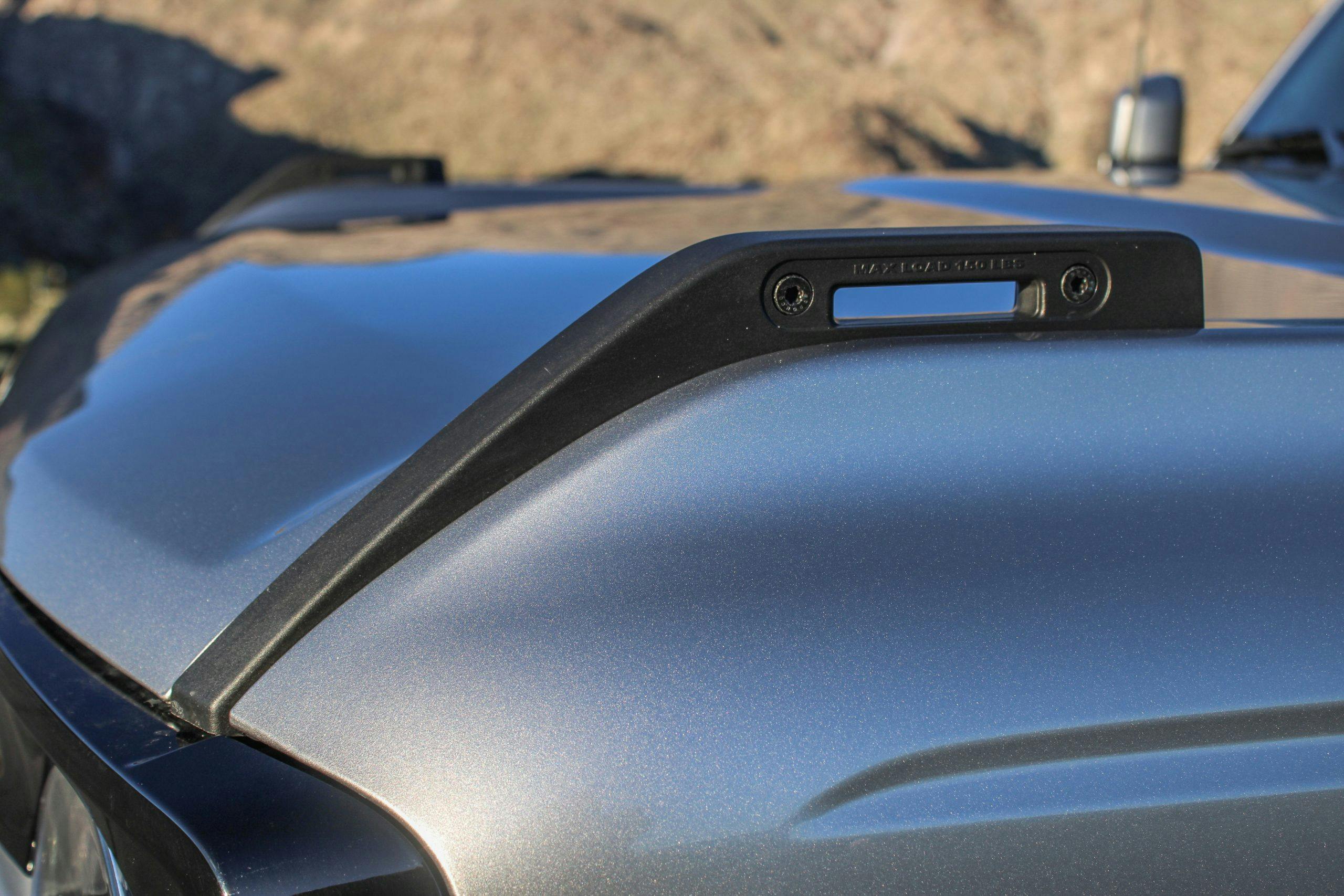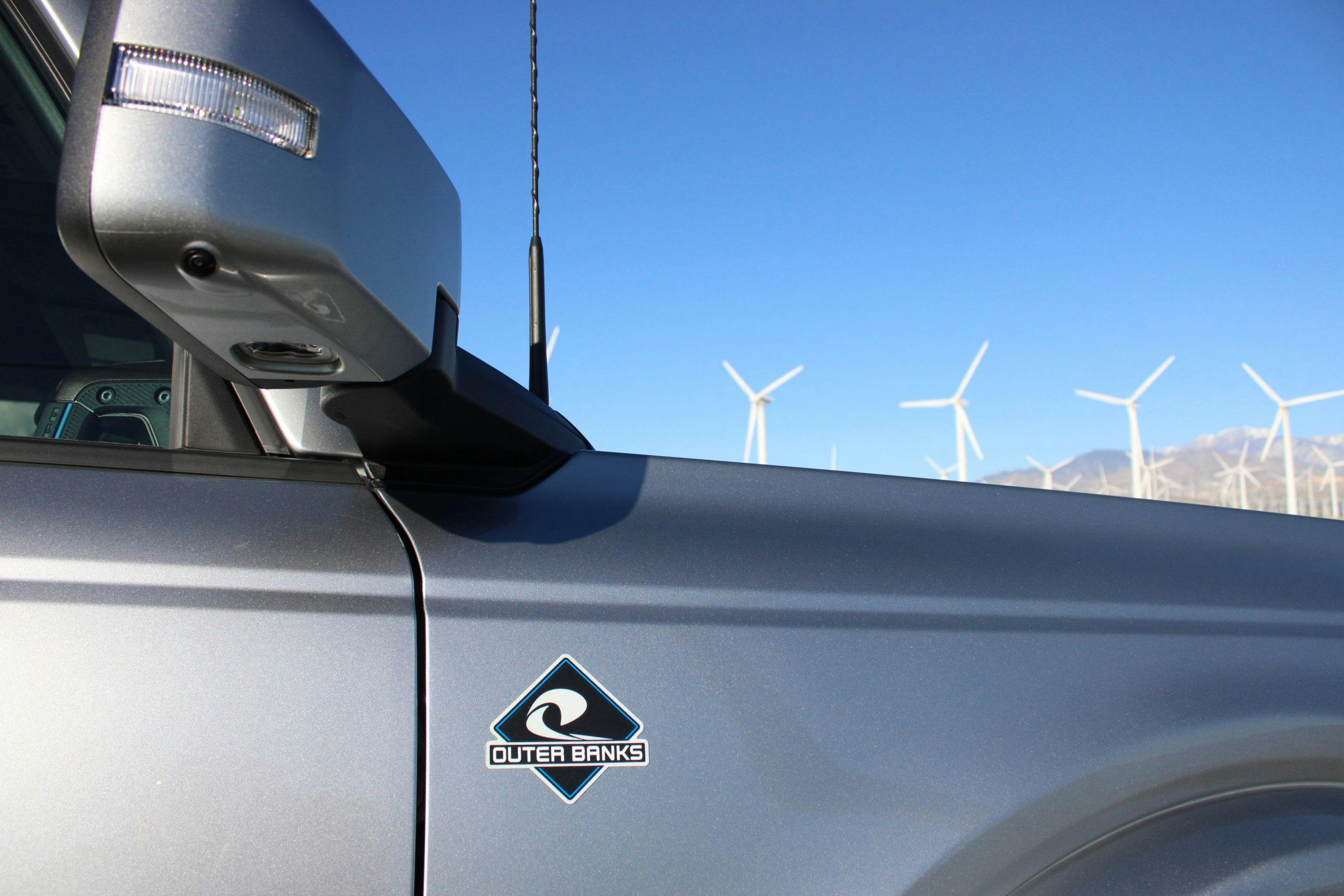Taking the new Bronco to “KoH” and the trails of Johnson Valley

Organized chaos in the wild west!
Johnson Valley, located one hour north of Palm Springs, not far from Joshua Tree National Park, is the birthplace of the current Ford Bronco. It’s a 188,000-acre off-highway vehicle (OHV) playscape with a terrain punctuated by steep red rocky mountains, rolling hills, open valleys, dry lake beds, and sandy valleys.
Enthusiasts visit year-round to test the limits of their steeds in this arid climate. Once a year, they come together for a 2-week period to watch the best of the best compete in the Ultra4s “King of the Hammers” events. About two miles from my destination, I know I’m getting closer — not because the GPS on my two-door Bronco Outer Banks edition has tipped me off, but because a large plume of dust is seen on the horizon. I start calculating how many particles of dust I will inhale. Trillions in total by all involved, I presume. Arriving into the valley, I see a temporary city spanning thousands of acres. Upon making a right hand turn down an unmarked road, tipped off by the dozens of vehicles headed in “that general vicinity”, a feeling reminiscent of attending my first Lollapalooza took over.
Dozens of trucks, vans, trailers, heading down the main strip toward the epicenter of it all. The adventurous UTVs, dirt bikes and heavily modified trucks/suvs make their own trails parallel to the rest of us. Their path only marked by creosote scrub, whoops and the occasional large stone. Welcome to Mad Max meets Burning Man!
Before the Joshua tree huggers get anxious about this event making a mess of mother nature, let it be known; KoH has a cleanup team for pre and post-event activities. There is also a dedicated foundation, treadlightly.org, to support the cause. The public takes pride in leaving the land better than they found. They know their role in making this a sustainable event for generations to come.
Several checkpoints are made en route to base camp. I’ve been provided with 3 wristbands that get me everywhere but on course. The closer I get to the start/finish line, the more it’s organized like SEMA. Vehicle displays, product demos, and concessions. Which, if you did not plan correctly, are much welcome because this is the middle of the desert. No drinking fountains, no vending machines — and a village of port-a-potties.
The King of the Hammers event is comprised of several series. Races are completed on the day they are started and could be thought of as different classes on a NASCAR weekend. Thus, racers can run multiple series/races over the entirety of the event. The races are uniquely identified by several variables: vehicle type, level of prep, and number of laps. Each has its own set of rules and specifications, and a co-driver is required. In contrast to rally racing, the co-driver and driver can both drive. The race winners for the feature race completed the event in 6 hours, 57 minutes, and 12.881 seconds.
Unique to the series, and unlike the better-known Baja desert racing, there are rock-crawling sections that defy logic. Often, these sections require the use of winches and straps to navigate. It’s not uncommon for the co-driver to exit the vehicle and guide the pilot through the most viable path. In these sections, the crowds line the canyons and cheer on the teams for clean ascends or stumbling follies. The slow roll-over of a vehicle builds suspense and sighs in unison are heard. This is a common occurrence, and part of the sport.
It’s impressive that the vehicles, no matter the class, are tuned for a hybrid purpose. Rock crawling and bombing the desert landscape at 60-100mph. It’s a sheer miracle and good technical planning, that teams and officials can keep the vehicles from having contact with each other. Vehicles are outfitted with radios and GPS equipment to send vital signals for location and pace or lack thereof. Boxes with LED lights mounted on the “dash” display green arrows for direction and red boxes or x’s to specify the pace of surrounding vehicles. This process of communication is imperative as visibility on the open sections is severely limited by the dust clouds. It can be like flying with a mix of visual and instrumentation approaches.

Having developed a precise system of communication to avoid vehicle to vehicle impacts is refreshing, too bad such a system couldn’t be implemented in road racing to minimize contact. Coincidentally, the stresses that are placed on the vehicles in this natural terrain result in a very low completion rate. A low completion rate of only 30% is common. 140 start, barely 40 finish. A team’s lack of mechanical sympathy, not reading the terrain, and pushing the vehicle too long to hard are causes for failure. The experts say that the races are won in the rocks. Knuckles, control arms, half-shafts are easily compromised by pinching a wheel between two boulders.
The spectators to these events have a unique understanding of what is happening on course. Not just because they witness competitors take good lines or bad, but because they drive the terrain. This event is special in that you don’t just show up at a stadium or closed road course and watch athletes do their thing. You get to turn the ignition, put your foot on the throttle and do your thing! Sure, you can’t cross the orange fencing set up to run the specific course set up. However, there are countless miles of untamed desert to cross, steep trails of rocks to climb and sand dunes to conquer.
“Is it my turn?”
Capable vehicle … check!
Thumbs up to put it through the paces … check!
General tour of the terrain from veterans … check!
“YES, it’s my turn!”

Truth be told, even leaving the proverbial harbor is intimidating. Smoothly blending into traffic and being assertive pays off. There are no traffic signals or straight edge crossroads leaving Hammer Town. If you’re a noob like me you head to “that hilltop, or that valley?”. To the veteran, or guy that’s studied the map, you head to Turkey Claw, Back Door, Desert 1 or 2, Chocolate Thunder or Jackhammer. These locations were lovingly named by the pioneers of the sport. The tradition is, the first to blaze the trail, earns naming rights. Let your imagination run wild as you guess why the origin of the trail names.
As you leave “port” and head toward a chosen destination, you pick up speed. It’s reminiscent of being on open water. One must have a 360-degree view, minding traffic from all directions. Here is where I recognize not all suspensions are created equal. Traction, horsepower, and torque output, quickly become the wind beneath your wings. It’s no cliché to say that the Bronco fits into this terrain as if it grew here, because it did! Johnson valley is where Ford developed and continues to test its limits. Not some closed course, or fence-laden off-road park, but in miles of variable terrain that quickly changes.

Ford’s response to this all-in-one terrain is G.O.A.T. modes. Clever acronym: ‘Goes-Over-Any-Terrain’. Depending on trim level, a total of 8 are available. The Outer Banks has 6, two of them off-road specific; Sand or Mud/Rut. The more off-road purpose-built trim packages include Baja and Rock-crawl modes. Each has specificity calibrated to maximize variables like; throttle response, torque delivery, shift points, steering feel, and even a forward-facing camera to help you pinpoint where the boulders below your sightline are located.
Additionally, easily accessible on the dash, a mix of manual settings: front and/or rear differential lock, traction control disabling, front sway bar disconnect and even a trail turn assist mode. Otherwise known as the ‘donut mode’, the latter ingeniously brakes the inside rear tire sending all traction to the outside read tire, allowing the vehicle to turn in a zero-turn mower fashion.
These are a lot of options for a guy that is accustomed to racing a Mazda Miata. No frills, no options, turn the key, warm up the tires and go! In a Miata, you optimize momentum, be smooth with your weight transfer (aka pedal and wheel application) and spend all moments, except on the straights, at the edge of grip. How will this knowledge transfer to various off-road terrains? Surpassingly, it is on par. The biggest differentiator is a terrain with whoops and dips, but the common denominator is the most important of all vehicle dynamics concepts … weight transfer. The primordial action adds more lateral or longitudinal weight to the vehicle via the use of brakes, throttle and/or steering. This rings true if you’re bombing the desert ruts or rock crawling. It’s just not happening at 90 mph on a smoothed paved surface. It could be happening at 1 mph on a 25-degree incline as your front left wheel is teetering 2 feet off the ground. Yes, the Ford Bronco is capable of this movement.
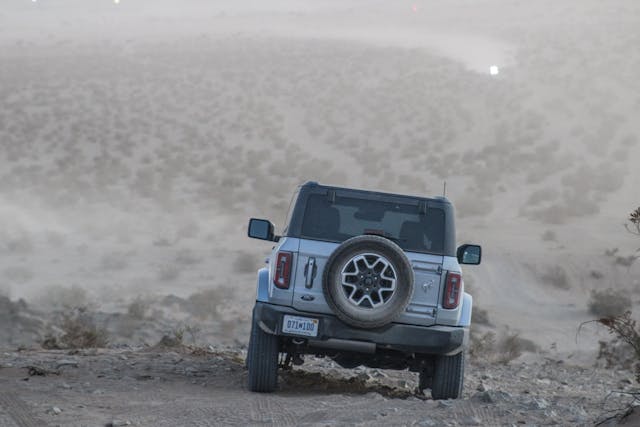
That being an extreme example, it was more common for me to make my way through the desert bumps and ruts. In Mud/Rut mode, I chose to disengage traction control. I wanted to work the slip angle and did not want to be limited by wheel slip. Additionally, the rear differential was locked to maximize grip. The Bronco felt as responsive as a TAG racing go-kart, except without the need for Popeye-like forearms. The steering was well balanced and provided accurate feedback.
The suspension was able to handle an impressive amount of speed depending on the depth of the whoops and ruts. At times, I would find myself over-optimistic at speeds north of 50 mph through 1 foot deep/tall whoops. Much of it was about rhythm and driver skill, but there are limitations to the vehicle. I was also provided the opportunity to drive a Bronco with the optional Sasquatch package, picking up about 20 mph through the same terrain.
Two terrains left to try: Sand dunes … and the rock!
The sand dunes are an enthusiast favorite. A balanced blend of momentum, giving-it-the-beans, and sawing at the wheel will let you claw your way up. There are limits to how high any vehicle can climb on a dune. The driver has three options when approaching a vertical stall. First is make it to the top and be the king of the mountain. Second, leave enough momentum to arc comfortably across the dune and make your way back down in a forward motion. Third? Give it too many beans and lose all traction, vertical stall, engage reverse and back up enough to point the vehicle downhill again.
There is an inherent risk to incorrectly executing two of these three. In a steep dune, not saving enough momentum to make the turn will lead to invoking the fourth and least favorable option of barrel rolling down the hill. I’m proud to say that I was successful in the execution of the first three options, and so avoided the fourth.

Rocks … the final frontier! I’ve never understood the exhilaration to come from moving through terrain at single digit speeds. Where is the adrenaline in that? Well, velocity takes on a whole new perspective when your rate of change with respects to your frame of reference becomes drastic. Comparable to playing chess with a Viking swinging a battleax at your head throughout the match. 25 degrees of pitch angle, followed by a roll angle so steep that the vehicle begins to slide toward a boulder that will surely dent the rocker panel or door, compounded by the need to make that move NOW, yet your next move is blind unless you reference the front grill cam trail sights. Now it’s making sense to me, the shots of adrenaline and intensity experienced over a 2-minute period to travel a mere 30 feet is intoxicating. Once again, the Bronco delivers with features like sway bar disconnect, front diff lockers, and a rear gear with enough torque to comfortably walk out of well-planned situations.
So, what could possibly go wrong on this trip? I kept the Bronco shiny side up, didn’t run across any reptiles (herpetophobic here), but I did fall in love with a new activity. In a garage already packed with track-worthy vehicles, the decision has been made to make room for an off-road vehicle.
Rather comically, my in-car video never looks as extreme as remembered. The camera puts on 10 lbs; it also takes away 10 mph and 10 degrees of extremism. It’s alright. We’ve lived to climb another day.
***
